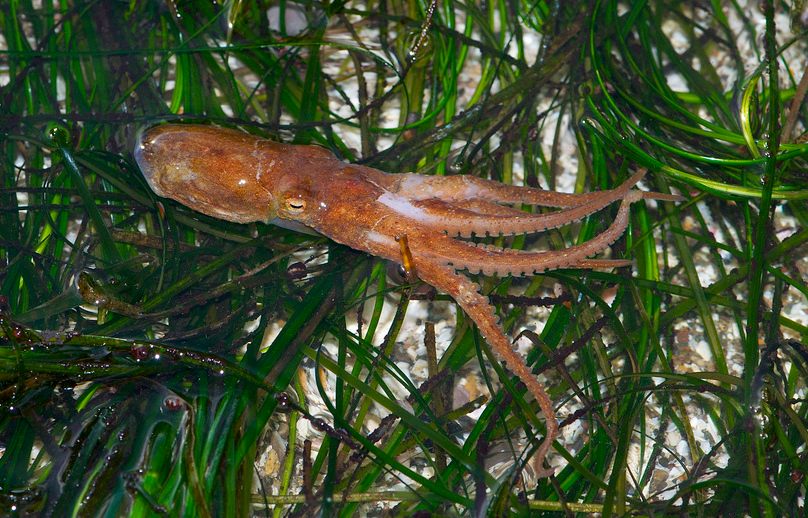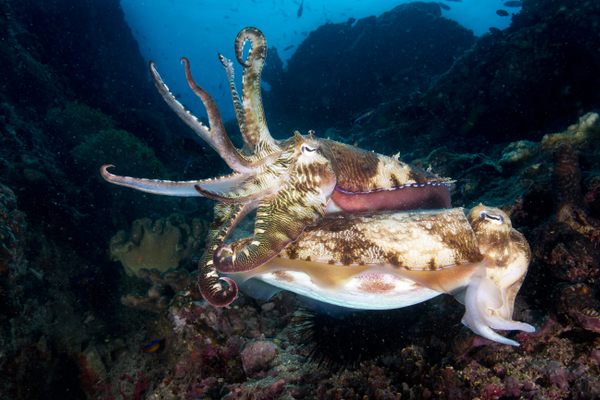See an Octopus Change Color as It Sleeps, Perchance Dreams
We know they’re smart, but there’s still a lot we don’t know.

Though the octopus in the video below may appear deep in sleep, its skin is wide awake. In a matter of seconds, it pulses from coconut white to muted gray to speckled brown, all while the cephalopod clings to a rock, its eyes shut tight. LiveScience recently shared this dramatic video, originally taken by Rebecca Otey in 2017, of a Caribbean two-spot octopus slumbering in a tank in the Butterfly Pavilion, a nonprofit invertebrate zoo in Colorado. The cephalopods are widely admired these days for their intelligence, but is this one … dreaming?
A conscious octopus changes its color and patterning on a dime to fool prey or escape danger. According to Jennifer Mather, a psychologist at the University of Lethbridge in Alberta, Canada, the color changes originate from a spontaneous, unconscious firing in the octopus’s optic lobe. A 2011 study suggests that many sleeping octopuses typically display a “half-and-half” skin pattern, with light areas and dark splotches, regardless of the color of their environment. While this seems like it could betray the animal’s presence in its stomping grounds off the coast of Haiti, Mather says wild octopuses keep themselves safe by sleeping in hidden dens.
According to Mather, one of the theories behind sleep is for an organism to rehearse and solidify traces in the brain from experiences of the previous day. Octopus brains do the same kind of thing. “If this central experience is ‘dreaming,’ and our dreaming is often linked to what has happened before, then octopuses might dream,” she says.
The only cephalopod with a proven penchant for dreaming is probably the cutest. A 2012 study led by Marcos G. Frank, now a neuroscientist at Washington State University Health Sciences Spokane, discovered that sleeping cuttlefish demonstrate a form of rapid eye movement (REM), the same stage of sleep that gives us our dreams, distinguished by the spontaneous activation of brain cells, going off like fireflies in a forest. For a cephalopod, this manifests in frantic eye movements under closed lids (octopuses: they’re just like us) or erratic shifts in skin coloration (or not). In Frank’s study, the sleeping cuttlefish’s chromatophores recombined into recognizable patterns, just like ones they displayed while awake. He believes this might be analogous to the weirdly familiar patchwork of human dreams. “This video is the best evidence I have ever seen that this particular cephalopod has a sleep-state similar to what we saw in cuttlefish,” Frank says of the Caribbean two-spot octopus.
While Otey’s video may be strong evidence, REM sleep hasn’t been confirmed in octopuses. That would require a neurobiological investigation in which scientists measure the electrical activity in a snoozing cephalopod. But if octopuses do indeed dream, we hope it’s of electric-green sea sheep.















Follow us on Twitter to get the latest on the world's hidden wonders.
Like us on Facebook to get the latest on the world's hidden wonders.
Follow us on Twitter Like us on Facebook